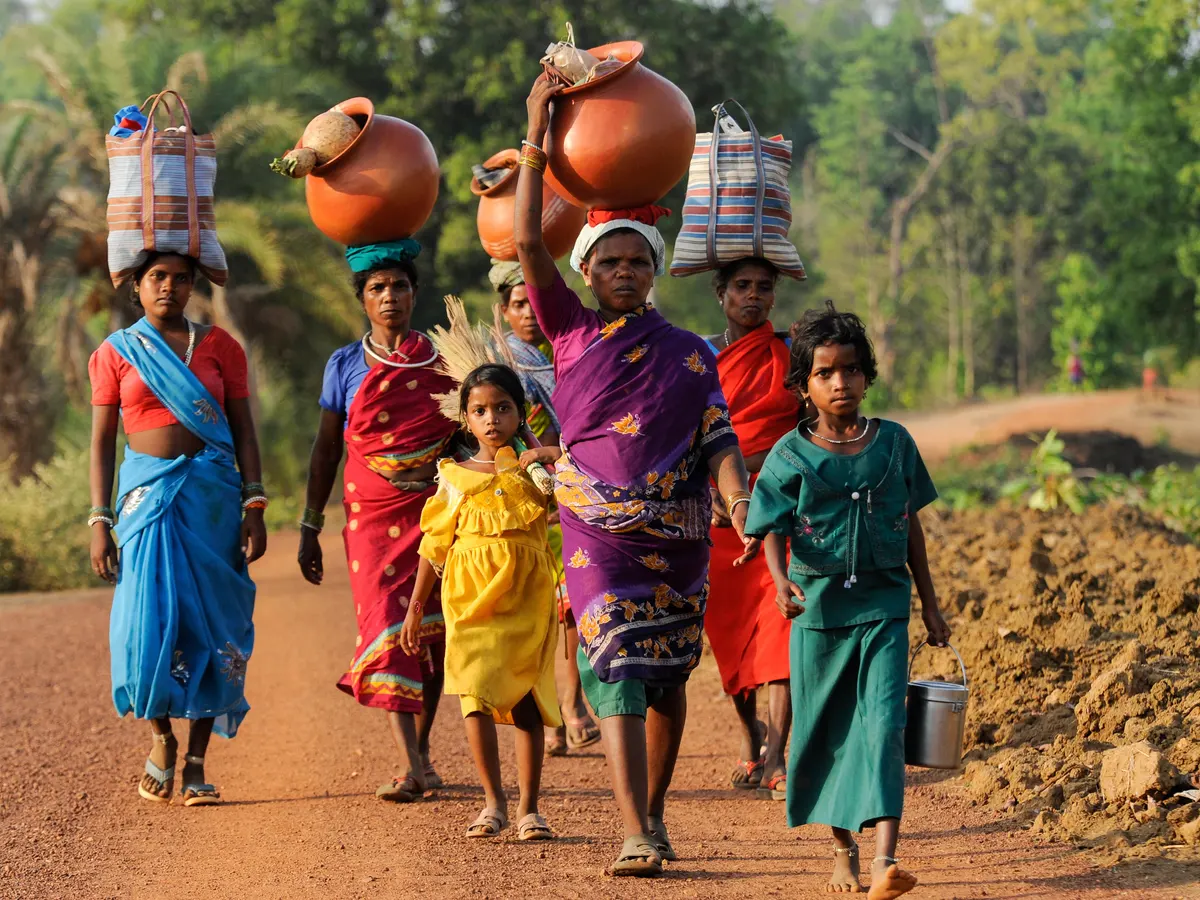Indian Tribal Policies in Pre-Independence Era

The history of tribal life during the British Rule in India has found mention in many scholarly writings and historical documents. Beginning in the 18th century, the British added to the consolidation of feudalism in India, first under the Jagirdari system and then under the Zamindari system.
Beginning with the Permanent Settlement imposed by the British in Bengal and Bihar, which later became the template for a deepening of feudalism throughout India, the older social and economic system in the country began to alter radically. Land, both forest areas belonging to Adivasis and settled farmland belonging to non-Adivasi peasants, was rapidly made the legal property of British-designated zamindars (landlords), who in turn moved to extract the maximum economic benefit possible from their newfound property and subjects.[1] Adivasi lands sometimes experienced an influx of non-local settlers, often brought from far away by the zamindars to better exploit local land, forest and labour. Deprived of the forests and resources they traditionally depended on and sometimes coerced to pay taxes, many Adivasis were forced to borrow at usurious rates from moneylenders, often the zamindars themselves. When they were unable to pay, that forced them to become bonded labourers for the zamindars. Often, far from paying off the principal of their debt, they were unable even to offset the compounding interest, and this was made the justification for their children working for the zamindar after the death of the initial borrower.
Land dispossession and subjugation by British and zamindar interests resulted in a number of Adivasi revolts in the late eighteenth and early nineteenth centuries, such as the Santal hul (or Santhal rebellion) of 1855–56. Although these were suppressed ruthlessly by the governing British authority, partial restoration of privileges to Adivasi elites and some leniency in tax burdens resulted in relative calm, despite continuing and widespread dispossession, from the late nineteenth century onwards. The economic deprivation, in some cases, triggered internal Adivasi migrations within India.
The Adivasis before the invasion of India by Mughals and British were considered to be equal part of society and were fully involved in kingships, in land and forest politics, in tributary relationships with other groups, in particular occupational specialisations and even in commerce and war.[2] They were also internally variegated, hierarchized and gendered communities.[3] During the pre-Mughal period in India, the Adivasis were not considered impure by the upper caste Hindu population, unlike dalits. The tribal population back then lived in remote habitations and had self-governance particularly, control over their lands based on their segmental organisation according to descent systems where their forms of lifestyle ranged from hunters or gatherers to farmers.[4] This form of lifestyle was and control over their land was disrupted with the spread of Mughal sultanate in India wherein their sovereignty of ownership over their land was challenged which led to several revolts by tribal communities against the Mughal Rulers. Prominent rebellions against the Mughals include those of the Bhils in 1632 and of the Bhil Gonds in 1643.[5] The arrival of the British in India was greeted with a similar sort of antagonistic reaction over land ownership and use of resources.
The 19th Century witnessed the establishment of a Forest Department by the British Government along with certain legislations that made it possible for the British Government to economically extract forest resources. The sustainable methods of traditional use of forests and the needs of forest ecology was ignored by invasive, revenue-centric legislations enacted by British government. The widespread eviction of tribal communities from forest areas was ordered for generating timber economy and other revenue resources. Due to these changes in the lifestyle of tribal habitations numerous rebellions against the British government were staged by the tribes such as the tribals of Bastar, the Kuki, the Nagas and the Santhals are all examples in this regard.
Although the Indian Forest Act came into being in 1927, which provided that any forest area or wasteland that was not privately owned could be marked as reserved areas, no particular system or settlement rights were formulated for tribal communities in India living in forests and large areas were not surveyed for this purpose. Tribal people involved in agriculture continued to cultivate crops without official land ownership. This instead created a system of patronage from the government under which nobody was allowed to use resources from forests without permissions garnered from the forest department. The practice of logging, hunting, foraging, or agriculture by tribals and non-tribals alike under this system thus constituted encroachments. The above-mentioned British legislation and invasive policies affected tribal habitations in India particularly their right to use of resources further possessing a challenge for government of independent India.
[1] Govind Kelkar; Dev Nathan (1991), Gender and Tribe: Women, Land and Forests in Jharkhand, Kali for Women, ISBN 978-1-85649-035-1.
[2] S. Guha (2013), ‘Beyond Caste: Identity and Power in South Asia, Past and Present’, Brill’s Indological Library, Volume 44.
[3] Shashank S. Sinha’s work on the changing gender structure amongst tribes of Chota Nagpur; Sinha, ‘Adivasis, Gender and the “Evil Eye”’; Uday Chandra’s essay here shows how status differentiation based on land-rights marked tribal protest politics in the colonial era’.
[4] Subhash Meena, Nitesh Pal Singh Meena, ‘Psychosocio Political Problems of Tribes in India’, ‘Tribes in India’, 2015, page 44-51.
[5] Ibid.

